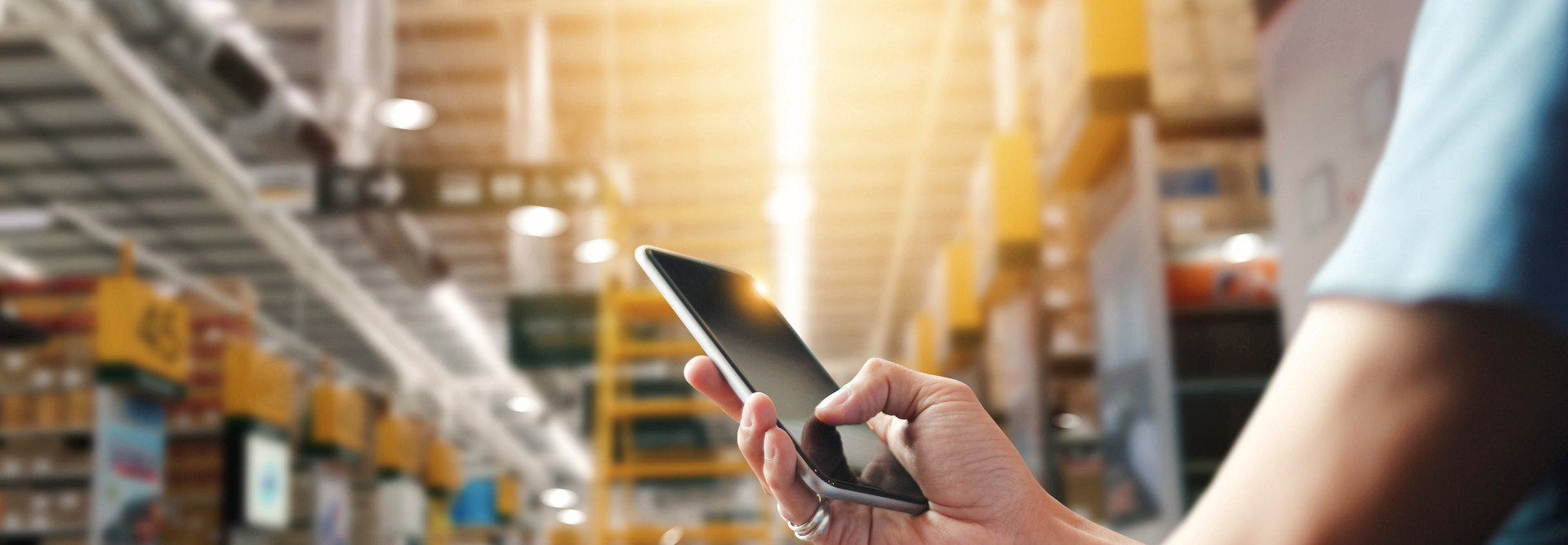How Retailers Will Get Better Data About In-Person Shopping Journeys
Dobson said retailers are considering innovative ways to close the in-store shopping data gap and modernize the experience for customers, planting “digital breadcrumbs” throughout stores that will help them unlock clues to shoppers’ physical buying journeys.
For example, imagine being able to scan bar codes in the store with a cellphone and pay for them as you shop, skipping the checkout line entirely. The retailer gets a window into not just what a consumer bought, but also how that consumer navigated the store, how long they were in the store and what they might have considered purchasing but didn’t, Dobson says: “Now you’re starting to unlock information about that customer journey in the store by providing them a service that they find valuable.”
Retailers will also equip locations with modern surveillance cameras that use artificial intelligence software, helping managers understand traffic patterns throughout the store.
The AI can also help with loss prevention by searching for patterns of behavior know to be associated with theft, Dobson said. “It’s a big issue for retailers and a big hit on the bottom line. Is there a way they can use technology to reduce loss? You start to see more and more, especially in the self-checkout space, systems that help the store staff identify some of those situations. It’s low-hanging fruit.”
AI-powered surveillance cameras can even help stores manage inventory. “In our survey, one of the biggest areas of customer dissatisfaction is when the store doesn’t have the item in stock that the customer has come to buy,” Dobson said. “AI can really help with that. Using cameras, you can see what’s on the shelf and what should be on the shelf, and you can see whether you’re getting low.”
NRF 2022: Follow BizTech's coverage of Retail's Big Show.
Retailers Are Changing the Way Stores Are Configured
Analyzing store traffic patterns is particularly helpful now, as retailers make permanent changes in store layouts that they have experimented with over the past two years. Many larger stores are reducing the amount of floor space devoted to sales, using it to create pickup spots for shoppers who make online purchases.
Data-based insights into which parts of the store get the least traffic can guide decisions about where to locate such features.
“Especially among big-box stores, even before COVID, a lot of the retailers were asking themselves, ‘Do we really need this much selling space?’”
When it comes to physical stores, retailers are realizing that some of the changes they made during the pandemic — such curbside and in-store pickup — will be permanent, because customers like them, Dobson says. Others — such as the manual attempts to control traffic flow, often with tape on the floor, to support physical distancing — will be jettisoned.
“I would characterize today’s world as kind of optimizing that omnichannel environment. That’s the phase retailers are in today,” he says.
A big challenge they face is ensuring that they have flexible technology architecture at the store level, at the edge, in order to deploy new solutions as circumstances arise.
“Retailers have been very good at identifying and deploying great point solutions to solve individual problems,” Dobson says. “They need to think more holistically about the edge. You’d never build a data center out of a bunch of point solutions — you’d build a flexible architecture and put applications inside it. They need to think about their edge architecture in the same way, with a set of building blocks at the edge that allows you to grow and build on top of it.”











